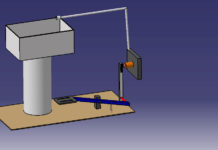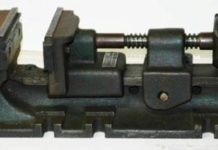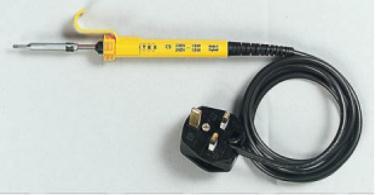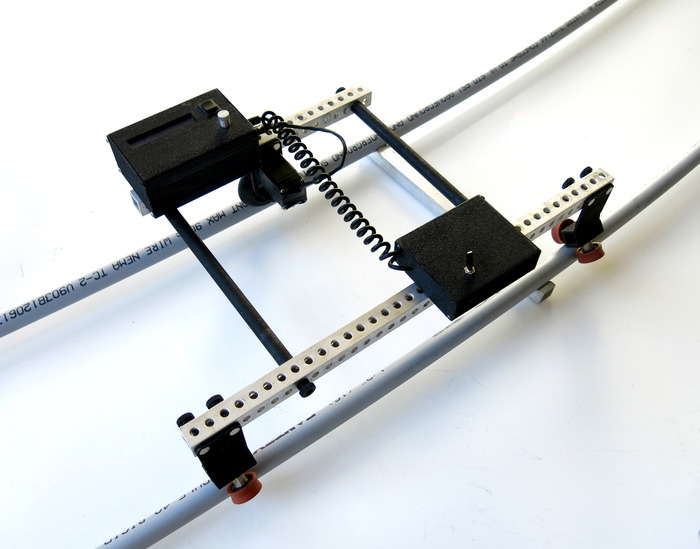MECHANICAL ENGINEERING : FORGING
Forging is an oldest shaping process used for the producing small articles for which accuracy in size is not so important. The parts are shaped by heating them in an open fire or hearth by the blacksmith and shaping them through applying compressive forces using hammers. Thus forging is defined as the plastic deformation of metals at elevated temperatures into a predetermined size or shape using compressive forces exerted through some means of hand hammers, small power hammers, die, press or upsetting machine. It consists essentially of changing or altering the shape and section of metal by hammering at a temperature of about 980°C, at which the metal is entirely plastic and can be easily deformed or shaped under pressure. The shop in which the various forging operations are carried out is known as the smithy or smith’s shop. A metal such as steel can be shaped in a cold state but the application of heat lowers the yield point and makes permanent deformation easier. Forging operation can be accomplished by hand or by a machine hammer. Forging processes may be classified into hot forging and cold forgings and each of them possesses their specific characteristics, merits, demerits and applications.
Hand forging process is also known as black-smithy work which is commonly employed for production of small articles using hammers on heated jobs. It is a manual controlled process even though some machinery such as power hammers can also be sometimes used.
Black-smithy is, therefore, a process by which metal may be heated and shaped to its requirements by the use of blacksmith tools either by hand or power hammer. In smithy
small parts are shaped by heating them in an open fire or hearth. Shaping is done under hand control using hand tools. This work is done in a smithy shop. In smith forging or hand forging open face dies are used and the hammering on the heated metal is done by hand to get the desired shape by judgment.
Forging by machine involves the use of forging dies and is generally employed for massproduction of accurate articles. In drop forging, closed impression dies are used and there is drastic flow of metal in the dies due to repeated blow or impact which compels the plastic metal to conform to the shape of the dies. The final shape of the product from raw material is achieved in a number of steps. There are some advantages, disadvantages and applications of forging operations which are given as under.
Advantages of forging
Some common advantages of forging are given as under.
1. Forged parts possess high ductility and offers great resistance to impact and fatigue loads.
2. Forging refines the structure of the metal.
3. It results in considerable saving in time, labor and material as compared to the production of similar item by cutting from a solid stock and then shaping it.
4. Forging distorts the previously created unidirectional fiber as created by rolling and increases the strength by setting the direction of grains.
5. Because of intense working, flaws are rarely found, so have good reliability.
6. The reasonable degree of accuracy may be obtained in forging operation.
7. The forged parts can be easily welded.
Disadvantages of forging
Few dis-advantages of forging are given as under.
1. Rapid oxidation in forging of metal surface at high temperature results in scaling which wears the dies.
2. The close tolerances in forging operations are difficult to maintain.
3. Forging is limited to simple shapes and has limitation for parts having undercuts etc.
4. Some materials are not readily worked by forging.
5. The initial cost of forging dies and the cost of their maintenance is high.
6. The metals gets cracked or distorted if worked below a specified temperature limit.
7. The maintenance cost of forging dies is also very high.
Applications of forging
Almost all metals and alloys can be forged. The low and medium carbon steels are readily hot forged without difficulty, but the high-carbon and alloy steels are more difficult to forge and require greater care. Forging is generally carried out on carbon alloy steels, wrought iron, copper-base alloys, alumunium alloys, and magnesium alloys. Stainless steels, nickelbased super-alloys, and titanium are forged especially for aerospace uses.
Producing of crank shaft of alloy steel is a good example which is produced by forging. Forging processes are among the most important manufacturing techniques utilized widely
in manufacturing of small tools, rail-road equipments, automobiles and trucks and components of aeroplane industries. These processes are also extensively used in the manufacturing of the parts of tractors, shipbuilding, cycle industries, railroad components, agricultural machinery etc. Copied from A Basic Manufacturing Processes and Workshop Technology by Rajender Singh.















